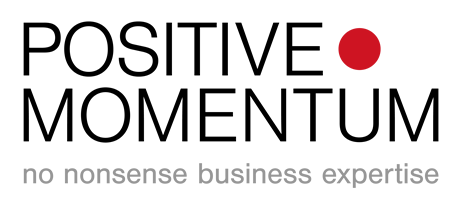You’ll have no doubt read the articles about purpose & how it has a positive impact on profitability, with research showing that companies with an outstanding culture and values have a 20-30% uplift in performance compared with their competitors who don’t have the same focus on their values (Harvard Business School Professor Emeritus James L. Heskett).
As my colleague Julian March stated in his recent article:
“Your company’s values form the bedrock of how you behave – what’s important to you as a firm, how you as a company see the world; and they should form the basis of how you act every day”.
I couldn’t agree more! In order to live the values every day, there is a pre-requisite to this, and that is to ensure that everyone in the business truly understands what they are in the first place.
If everyone knows what the values mean, and they interpret them correctly by sharing examples of how they show up in the day to day actions, it ensures consistency across the organisation. Talking about them internally, with customers and partners, and identifying where you don’t follow the values and make mistakes really makes them part of the everyday vocabulary.
Having spent 15 years leading teams at Ikano (a company owned by the founders of IKEA), I experienced how company values can bring people together through a shared understanding. What made the difference was that the values were understood, the essence of the company identity was strong: an embodiment of what we stood for, all characterised by the founder when he built the company.
Here are my tips for sharing your values through stories.
SUCCINCT
Your values are essential to your culture and brand so why have them if most of your team don’t even know what they are? Make sure they are memorable so that when they are communicated, they are easy to remember and are therefore accurately recalled. This means that they have to be easy to explain in a short, bullet-point list of simple, single sentences. Creating a visual representation of them will also help to bring the words to life.
TRADITIONS
Providing some context of how they were originated and their significance will make them more meaningful. The history and the stories surrounding a particular value will explain the underlying behaviour and where it came from. I was fortunate to visit Ingevar Kamprad at his family farm in Almhult, and that visit, and the stories shared, really brought to life the meaning of being humble and cost conscious.
ORIENTATE
Before you can truly live the values you have to be able to understand them. Sending out a presentation outlining the core values, and sticking the values on a screensaver in the hope that everyone will adopt them won’t work! Demonstrate the importance and commitment through formalised training, provide teams with the opportunity to hear and share stories, have time to discuss, question, hear different viewpoints and challenges so there is a true understanding of them.
REINFORCE
Take the opportunity to reinforce the values and their meaning with examples in communications for consistent and constant messaging, whether that be in writing, on the walls, in emails, in newsletters, in presentations, in newsletters or in tender documents. Rewarding values centric behaviours, by giving employees the opportunity to nominate co-workers for living the values, and written recognition in newsletters or on the website is another approach to share examples and show how to interpret them correctly.
INTERPRETATION
Values in essence, dictate which behaviours are appreciated and which are unacceptable; they affect the way you conduct business and how you treat your customers. If the values really are there to make a difference, they need to guide everyone and you have to articulate them by sharing examples to make sure they are interpreted correctly. e.g. If “Dare to be different” is one of your values your employees should be sharing examples of where people challenged the status quo & existing solutions, thinking in unconventional ways, experimenting and where mistakes were made by trying out new things which were acceptable as they were for a good reason.
EXEMPLARS
Leaders are always being watched and should be the exemplars for living the company values. Failing to “lead by example” is worse than not having any core values at all. Support your managers on how to walk the walk by putting the values at the heart of your management and leadership programmes, ensuring your leaders really understand how to interpret the values in their leadership behaviours. This is especially important in difficult times, so consider refresher communications, training and sharing best practice to support the managers. If they are embedded in performance management, evaluation, then share examples of what good looks like and keep recognising these good behaviours and addressing the poor behaviours.
“If there is such a thing as good leadership, it is to give a good example”
Ingvar Kamprad- IKEA founder
SOLICIT
It’s important to check in to see whether your company is living by its values and ensuring they don’t get watered down and still have meaning. Get feedback through pulse surveys, co-worker forums, and see what they say and evaluate if the company values are understood. You can then act and reinforce on the areas that require action and clarification.
Having a belief in the foundations of the values really can transform into the everyday DNA of a company, so take the time to ensure your values are in place and are meaningful.
Many of you will have experienced first-hand that as organisations continue to find their way through the current situation, whether they are in crisis, recovery or rebooting mode, many are setting themselves apart through the actions they are taking with their customers, suppliers and their employees.
“How” companies and leaders act during this time will be remembered in the years to come, so putting your company values front and centre, and being consistent really matters, now more than ever!








